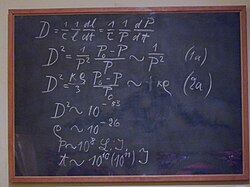Museum of the History of Science, Oxford
| History of Science Museum | |
|
Oxfordshire | |
|---|---|
 The Old Ashmolean Building as it stands today | |
| Type: | University museum |
| Location | |
| Grid reference: | SP515064 |
| Location: | 51°45’16"N, 1°15’19"W |
| City: | Oxford |
| History | |
| Address: | Broad Street |
| Built 1683 | |
| University museum | |
| Information | |
| Website: | www.hsm.ox.ac.uk/ |
The History of Science Museum in Broad Street in Oxford holds a leading collection of scientific instruments from Middle Ages to the 19th century. It is a part of the University of Oxford. The museum building is also known as the Old Ashmolean Building to distinguish it from the newer Ashmolean Museum building completed in 1894. The museum was built in 1683, and it is the world's oldest surviving purpose-built museum.
History
The museum building was built in 1683 to house Elias Ashmole's collection, and this created the Ashmolean Museum. It was the world's first purpose-built museum building and was also open to the public.
The original concept of the museum was to institutionalize the new learning about nature that appeared in the 17th century and experiments concerning natural philosophy were undertaken in a chemical laboratory in the basement, while lectures and demonstration took place in the School of Natural History, on the middle floor. Ashmole's collection was expanded to include a broad range of activities associated with the history of natural knowledge and in 1924 the gift of Lewis Evans' collection allowed the museum further improvement, becoming the Museum of the History of Science and appointing Robert Gunther as its first curator.
Collections and exhibitions

The collection and the building itself now occupies a special position in the study of the history of science and in the development of western culture and collecting.
One of the most iconic objects in the collection is Einstein's Blackboard[1] that Albert Einstein used on 16 May 1931 in his lectures while visiting the University of Oxford, rescued by dons including and E. J. Bowen and Gavin de Beer.[2]
The current collection contains around 18,000 objects from classical antiquity to the early 20th century, representing almost all aspects of the history of science and is used for both academic study and enjoyment by the visiting public.
The museum contains a wide range of scientific instruments, such as quadrants, astrolabes (the most complete collection in the world with c.170 instruments), sundials, early mathematical instruments (used for calculating, astronomy, navigation, surveying and drawing), optical instruments (microscopes, telescopes and cameras), equipment associated with chemistry, natural philosophy and medicine, and a reference library regarding the history of scientific instruments that includes manuscripts, incunabula, prints and printed ephemera, and early photographic items.
The museum shows the development of mechanical clocks. Lantern clocks and longcase clocks are exhibited in the Beeson Room, named after the antiquarian horologist Cyril Beeson (1889–1975)[3] who gave his collection to the museum. Early turret clocks are exhibited above the stairs from the basement to the raised ground floor. The museum hold a collection of turned ivory and other objects made by Lady Gertrude Crawford.[4]
From October 2009 until February 2010, the Museum hosted the first major exhibition of Steampunk art objects, curated by Art Donovan and presented by Dr Jim Bennett, then the museum director.[5][6]
The museum also houses the Rochester Avionic Archive, which includes a collection of avionics that originated with the Elliot Brothers, but also includes pieces from Marconi and BAE Systems.[7]
See also
- Whipple Museum of the History of Science: the equivalent institution within the University of Cambridge

Outside links
| ("Wikimedia Commons" has material about Museum of the History of Science, Oxford) |
References
- ↑ "Bye-bye blackboard... from Einstein and others". Museum of the History of Science. http://www.mhs.ox.ac.uk/blackboard/einstein-text.htm.
- ↑ Gunther, A. E. (1967). Robert T. Gunther. Early Science in Oxford. XV. Oxford University Press. pp. 250, 436.
- ↑ Beeson, C.F.C. (1989). A.V., Simcock. ed. Clockmaking in Oxfordshire 1400–1850 (3rd ed.). Oxford: Museum of the History of Science. frontispiece. ISBN 0-903364-06-9.
- ↑ "Collection of turned ivory and other objects, by Lady Gertrude E. Crawford (MHS Record Details: IRN 8076, Inventory number 26440)" (in en-GB). http://www.mhs.ox.ac.uk/object/inv/26440.
- ↑ "Steampunk". Museum of the History of Science, Oxford. http://www.mhs.ox.ac.uk/steampunk/. "Imagine the technology of today with the aesthetic of Victorian science. From redesigned practical items to fantastical contraptions, this exhibition showcases the work of eighteen Steampunk artists from across the globe."
- ↑ Ward, Mark (30 November 2009). "Tech Know: Fast forward to the past". Technology. BBC. http://news.bbc.co.uk/2/hi/technology/8376028.stm.
- ↑ "ABOUT ROCHESTER AVIONIC ARCHIVES". Rochester Avionic Archives. http://rochesteravionicarchives.co.uk/about-us.